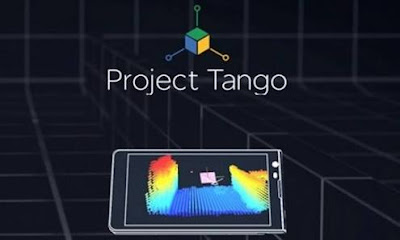Google closes Project 2018 Tango to focus exclusively on ARCore
Google closes Project 2018 Tango to focus exclusively on ARCore
Google closes Tango (known as Darling Project Tango) in a movement to some obvious extent, but what strikes us is that it has been so soon, since Google Tango has only three years of development and has given life just two devices.
In a discreet way, without a statement in form and without an explanation, it was Tango’s Twitter account who broke the news that support for this technology will end on March 1, 2018 . Here, developers are only asked to adopt ARCore for future augmented reality projects.
Tango and augmented reality as something complicated and expensive
Project Tango was born in 2014 as one of the first augmented reality developments designed for the general public , which was born within the Advanced Technology and Projects division (ATAP), which was owned by Motorola. Already in 2015 Project Tango stops being a project and integrates Google officially as simply ‘Tango’.
Between 2014 and 2015, two devices designed for developers were launched, which were created to work on future applications of augmented reality. The first one was ‘ Peanut ‘, which was given to the first partners of the project, and later came ‘Yellowstone’, a 7-inch tablet manufactured by LG that sold for $ 1024, and then dropped to 512 dollars due to the cold reception by the community.
The main problems of Tango were its high requirements of hardware and software , because although Google wanted to sell it as something simple for everyone, the reality is that they needed three cameras, good storage for the applications and processing power for start walking them smoothly.
Already at the beginning of 2016 Google launched with everything, during the CES of Las Vegas, with a surprise event where they announced their partnership with Lenovo for the launch of the first commercial smartphone with Tango. In the middle of that 2016 came the Lenovo PHAB2 Pro , which would not go on sale until the end of that year, and which was an expensive device, extremely large and where the processing power was not sufficient to support the (few) applications of augmented reality.
In January of this 2017, also during the CES, Asus bet on Tango and announced the ASUS ZenFone AR , a device that like the PHAB2 Pro passed without penalty or glory. One of the main problems here was the lack of applications , while those that were available had an erratic behavior and consumed a lot of resources and battery.
Today finally, after three years, two devices for developers and two commercial smartphones, Tango says goodbye discreetly as a failure in augmented reality .
Google closes Tango (known as Darling Project Tango) in a movement to some obvious extent, but what strikes us is that it has been so soon, since Google Tango has only three years of development and has given life just two devices.
In a discreet way, without a statement in form and without an explanation, it was Tango’s Twitter account who broke the news that support for this technology will end on March 1, 2018 . Here, developers are only asked to adopt ARCore for future augmented reality projects.
Tango and augmented reality as something complicated and expensive
Project Tango was born in 2014 as one of the first augmented reality developments designed for the general public , which was born within the Advanced Technology and Projects division (ATAP), which was owned by Motorola. Already in 2015 Project Tango stops being a project and integrates Google officially as simply ‘Tango’.
Between 2014 and 2015, two devices designed for developers were launched, which were created to work on future applications of augmented reality. The first one was ‘ Peanut ‘, which was given to the first partners of the project, and later came ‘Yellowstone’, a 7-inch tablet manufactured by LG that sold for $ 1024, and then dropped to 512 dollars due to the cold reception by the community.
The main problems of Tango were its high requirements of hardware and software , because although Google wanted to sell it as something simple for everyone, the reality is that they needed three cameras, good storage for the applications and processing power for start walking them smoothly.
Already at the beginning of 2016 Google launched with everything, during the CES of Las Vegas, with a surprise event where they announced their partnership with Lenovo for the launch of the first commercial smartphone with Tango. In the middle of that 2016 came the Lenovo PHAB2 Pro , which would not go on sale until the end of that year, and which was an expensive device, extremely large and where the processing power was not sufficient to support the (few) applications of augmented reality.
In January of this 2017, also during the CES, Asus bet on Tango and announced the ASUS ZenFone AR , a device that like the PHAB2 Pro passed without penalty or glory. One of the main problems here was the lack of applications , while those that were available had an erratic behavior and consumed a lot of resources and battery.
Today finally, after three years, two devices for developers and two commercial smartphones, Tango says goodbye discreetly as a failure in augmented reality .




Comments
Post a Comment